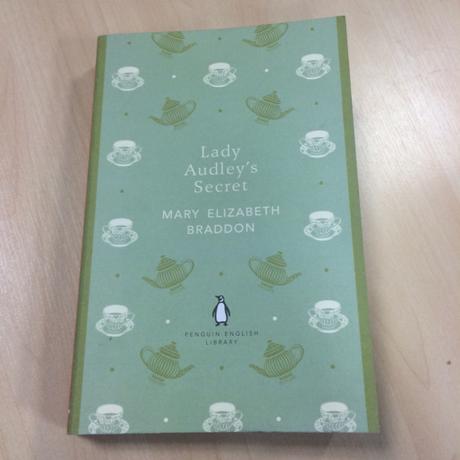How do we know what is true, and what is not? How do we know that people really are who they say they are? Are you ever only one person? These were questions I asked myself while reading Lady Audley's Secret recently. The novel starts off simply enough with a few chapters to set things up: the governness Miss Lucy Graham has recently married the much older Sir Michael Audley and become the eponymous heroine of the title. She is young and very beautiful - in fact throughout the book it is reiterated several times that she derives most of her power, and identity, from her beauty. We also meet Sir Michael's nephew, Robert Audley, who is a layabout but somehow also a barrister; Sir Michael's daughter Alicia, who hates Lady Audley and is in love with Robert; and George Talboys, who is just about to land in England after having made his fortune finding gold in Australia. George has been gone for three years and left his wife and child behind, leaving them only a note to explain where he was going. His first task in England is to find his wife, Helen. It does not prove as simple as that.

From this point it all gets a bit complicated. Already we are wondering about Lady Audley and where she has come from, and why she has married Sir Michael, who though clearly a lovely person, is much older than her. It takes a long time for the reader to really get to grips with Lady Audley's character. She is described as being very young and babyish, with childish mannerisms and a certain innocence about her; and yet when we see her alone with her maid, Phoebe, she seems much older and self-assured, and not afraid to ask for what she wants. Sir Michael has lavished her with a beautiful set of rooms filled with expensive trinkets, and you can't help but think it is suspicious that she is all too willing to accept such riches from her new husband. Robert is beguiled by his new aunt and unwillingly attracted to her. Her charm and beauty, as well as her charisma, starts to form the idea of her as a siren, a seducer. And of course the title sets you off right away - what is she hiding?
Robert happens to be very good friends with George, and when he returns from Australia Robert brings him to Audley Court; but before he can meet Sir Michael and the new Lady Audley, George disappears. The rest of the novel centres around Robert's search for him, and the various layers and forms of truth that he discovers along the way. It is shown, very deftly, that most of the characters in the novel simply accept the truth that is shown to them at face value. Once Robert has the motivation of finding his friend, he is unafraid to pull back the curtain and question what he previously thought to be true. It is fascinating to read about how much trouble Robert has to go to learn anything about George's disappearance; in an age before modern technology, he travels up and down the country, questioning people about George. Without telephones or computers, finding out each piece of information is at least twice as hard as it would be now. I marvelled at the number of times Robert could so easily have missed something or someone. He has to dig and dig to get to anything other than surface truths, and you can see why they are so often accepted as fact by the other characters. The nature of truth itself is examined as Robert breaks through the layers.
Lady Audley's is the identity we are chiefly concerned with; but Robert's is also rather important. He is a barrister but has never worked a day in his life - he just sits around smoking and reading French novels. His family do not think of him as very intelligent, and it is stated more than once that he doesn't seem to care about anything very much, and doesn't put much value on love and human relationships. And yet once George goes missing, he is fraught with concern for his friend, and will do anything to find him. He becomes an amatuer detective, and the mystery consumes his life. He doubts himself for the first time, and wonders what he is capable of, while challenging what is presented to him as the truth. He has created a version of himself, and this is worn away by his search for George. Similarly Lady Audley's identity and self are challenged as the events of the novel start to affect her. The facade of 'Lady Audley' is slowly broken down, and we start to see the woman underneath. Has she really become who we think she is, or does her old self remain?
This novel is also full of gender and class issues, which are wonderfully explored in the essay at the back of the Penguin English Library edition: 'Gender and Role Playing' by Elizabeth Tilley. I would really recommend reading it, but only after you've read the novel as it goes into the key plot points. It's best to go into this novel without knowing anything about what happens, as eash layer of truth brings a new revelation, and shows you a new side to the characters. I very much admire Mary Elizabeth Braddon for writing such a complex and multi-faceted novel. Lady Audley must be one of the best literary creations of the 19th century, and I am very glad I took the time to find out who she really is. Will you?
*
First published as a serial in the magazine Robin Goodfellow, and then the Sixpenny Magazine, before being published as a novel by William Tinsley in 1862. I read the 2012 Penguin English Library edition (pictured above).
Purchase from Foyles.